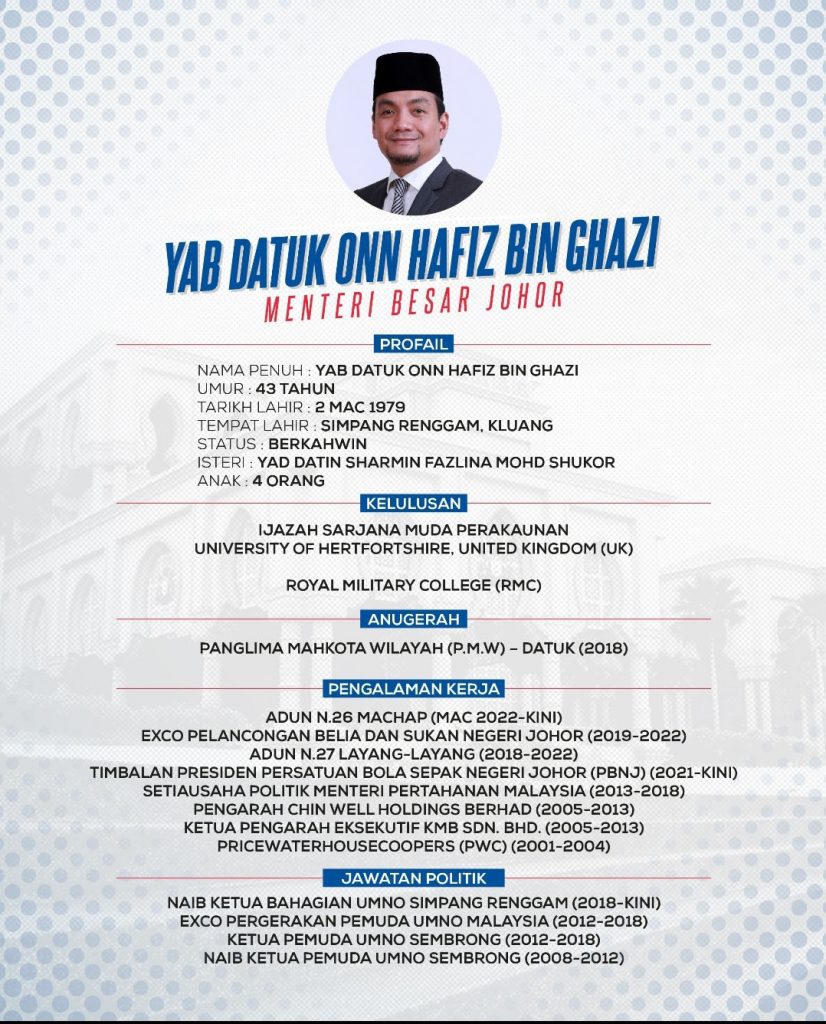Qarrem Kassim was quoted in South China Morning Post on 23 August 2025.
Kuala Lumpur’s new ban on exports of unprocessed rare earth metals reflects how Malaysia is carving out its own path in the rare earth supply chain
Malaysia’s ban on exports of unprocessed rare earth metals this week signals that the Southeast Asian country has a realistic shot – on its own terms – at feeding the mineral-hungry United States amid its strained trade ties with the world’s dominant supplier, China, according to analysts.
Kuala Lumpur will bar exports of unprocessed rare earth minerals, which are globally prized raw materials used in a range of electronic hardware, to keep supplies onshore for investment in downstream industries, a Malaysian official said this week.
The country’s minister of investment, trade and industry, Tengku Zafrul Abdul Aziz, told the Malay Mail news outlet that foreign investors could jump into the downstream Malaysian rare earths sector if their projects involve local mineral processing, job creation and technology transfers. The processed rare earth metals could be exported.
While many countries sit on rare earth reserves, analysts say Malaysia’s industry is likely to take off because it already has processing capacity, and because US buyers of rare earth metals are scrambling for non-Chinese sources.
“Malaysia’s existing capabilities give it a head start in integrating into global supply chains,” said Qarrem Kassim, an analyst at the Institute of Strategic & International Studies Kuala Lumpur.
“Applying this export ban equally to all sides is a signal that Malaysia is willing to exercise its geoeconomic agency to prioritise its own development needs,” he said. “This may result in potential foreign investment down the road.”
The Southeast Asian country’s Ministry of Natural Resources and Environmental Sustainability had said in a “business model” last year that it would “delve into” mining for heavy rare earth metals that are essential components in everyday devices such as smartphones and computers, as well as in technologies such as electric vehicles and solar panels.
Officials have advanced that ambition this year by laying plans for two more processing plants, the Malaysian national Applied Research and Development Centre’s technology advisory head, Nordin Ramli, said this month on his LinkedIn page.
A strategic rare earth element sector would strengthen [Malaysia’s] geoeconomic leverage with the US, the EU, Japan and others
– Qarrem Kassim, analyst
The ministry’s business model specifically calls for the development of “ion-adsorption clay rare earth elements”, which are relatively easy to extract.
Malaysia already hosts a major processing firm, the Lynas Malaysia subsidiary of Australia-based Lynas Rare Earths. Lynas Malaysia runs the world’s biggest rare earths processing compound outside China, using mostly Australian feedstock.
Lynas Malaysia contributes 11 per cent of global rare earth metals, “with the potential to increase its contribution”, according to the business model.
The business model, formulated over two years, said global demand for a type of “super-magnets” made from rare earths is projected to grow by 114 per cent in 2030 over 2020 levels.
With Malaysia’s total reserve of rare earth elements valued at US$175 billion, according to an East Asia Forum report last week, the country’s efforts to double down on rare earths follow concerns in the West about whether China will curb exports again.
In response to increases in US tariffs announced in April, China imposed export controls on seven rare earth elements and permanent magnets, requiring companies to obtain government permits before shipping them overseas.
The export controls sent shock waves through global supply chains. Following trade talks with US officials in London in early June, China’s Ministry of Commerce said late that month that it would “speed up the approval of export permits”. In July, China’s exports of permanent magnets rose to a six-month high, marking a second month of growth after the government pledged to accelerate export-permit approvals for the rare earth derivative.
“Given that Malaysia has a trade-oriented foreign policy, a strategic rare earth element sector would strengthen its geoeconomic leverage with the US, the EU, Japan and others as they seek to diversify their supply chains,” Kassim said.
The Lynas processing facility in Malaysia has become much more strategically significant in 2025
– Rajiv Biswas, Asia-Pacific Economics
In May, Malaysia began issuing non-preferential certificates of origin for US-bound exports. Rare earths had been “used as a negotiation tool” in Malaysia’s talks with the US, said Tham Siew Yean, a visiting senior fellow with the ISEAS – Yusof Ishak Institute in Singapore.
“The rare earth element processing landscape is going through a period of intense disruption in the medium term, as Western governments and multinationals try to establish more secure supply chains,” said Rajiv Biswas, CEO of the research firm Asia-Pacific Economics.
“As the US and EU are trying to reduce their supply-chain vulnerability to Chinese imports of rare earth products, the Lynas processing facility in Malaysia has become much more strategically significant in 2025,” he added.
Chinese firms are likely to be among the investors keen on joining Malaysia’s downstream rare earths sector, analysts said.
China, the only country currently capable of producing all 17 rare earth elements on the periodic table, was said in April to have agreed to share processing technology with Malaysia as a boost to economic ties. China accounts for more than 60 per cent of global rare earth mining and 90 per cent of processing output.
Malaysia needs more technology for purification, centrifuging – the separation of solids from liquids – and shipping, to level up its rare earths sector, said Charles Chang, a finance professor at Fudan University in Shanghai. Malaysia has the capacity to expand its sector within two to four years, Chang said.
But Kassim noted that since China currently bans the export of refining technologies, this “fundamentally limits” its scope of cooperation with Malaysia.
Chinese developers of wind power and new-energy vehicles still need a supply of rare earths, however, as both are “being deployed at a rapid pace” that could be fuelled by Malaysian supplies, said Jon Hykawy, president of Toronto-based industry advisory Stormcrow Capital.
“These ionic clay deposits generally contain a higher proportion of valuable and truly rare heavy rare earths, like dysprosium and terbium, that are important when manufacturing magnets to be used in the wind power or automotive sectors,” he said.
The government’s business model calls for “fast-tracking” the domestic rare earth supply chain. “Timing is crucial, as heightened US-Sino trade tensions have created an investment window,” Kassim said.
This article was first published in South China Morning Post on 23 August 2025.





